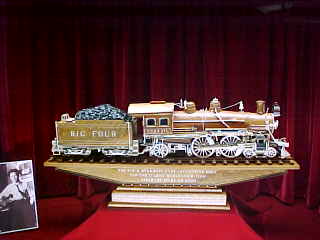
Ernest "Mooney" Warthers was the "World's Master Carver". He was best known for his ebony and ivory steam engine carvings. He was born on October 30, 1885 to Swiss Immigrants. His father died at age three and he attended school only though the second grade. He then worked as a herdsman.
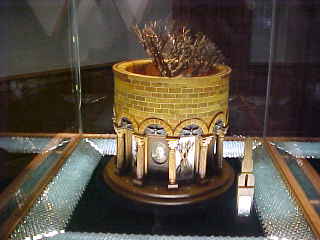
During this time he got his nickname Mooney, which was short for Moonay which in Swiss means "Bull of the Herd". On one of his daily treks he found a penknife which became his instrument to fame. He took up Whittling which led him to carve the Round Tower and Pliers Tree which was displayed at the 1923 Chicago World's Fair. In 1899 at age fourteen, he got a job at a local steel mill, the American Sheet and Tin Plate Company. He worked there for twenty-three years. While working there he did a Walnut and Ivory Carving of the steel mill he worked at. In 1905 he made his mother a small paring knife. This was the start of the Warthers Kitchen Cutlery which is still the family business today. On October 29, 1910 Mooney married Freida Richards. One hobby they both shared was collecting Indian arrowheads. Freida at age ten had started collecting buttons and did so for her next eighty-three years. In 1912 Mooney built a small workshop on a bluff overlooking the Calico Ditch.
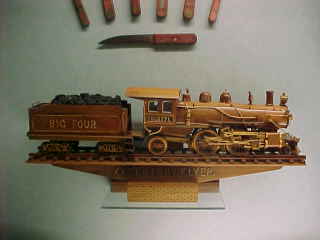
At age twenty-eight Mooney stopped whittling and started carving the "History of Steam" as he loved trains. He felt that the steam engine was the most wonderful invention of all time. He did 64 carvings of steam engines which starts in 250 BC with Heros Engine and ends with a Union Pacific Railroad Big Boy Locomotive in 1941. For his first fifteen carvings he used walnut and bones. In 1923 Ivory became affordable. He then started carvings in walnut, ivory and ebony. Also in 1923, the New York Central Railroad discovered Mooney and offered to display his works on a special train. He quit his job at the steel mill after 23 years and toured the country with the train for six months. After that his carvings were displayed at Grand Central Station in New York City for two and a half years. On January 1,1926 Mooney returned home to Ohio and the couple decided he should devote himself to carving and they would make their living making and selling knives as well as traveling with his carvings. These were the "Golden Years of Mooney's Work."
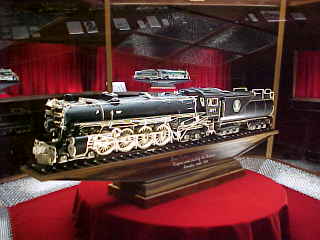
Mooney's favorite work was of his Great Northern 4-8-4 2577 completed in 1933. In 1941 with the country involved in World War II, he took another hiatus from carving and made 1100 Commando Knives for the local servicemen. In 1953 at age 68, he completed his 54th Carving in the Age of Steam, the Big Boy locomotive. When the American Railroads officially dieselized, Mooney declared that he would never carve a diesel locomotive even if he lived to be 1,000. He retired at age 68. In 1957 his son Dave encouraged his father to start carving again which led to the Great Events in American Railroad History. These carvings included "The John Bull, Great Locomotive Chase, Lincoln's Funeral Train, The Driving of the Golden Spike, Casey Jones Locomotive and the Empire State Express". With this all done, Mooney died at age 83. The first display building was built in 1936 and that was the home for the carvings until 1963 when son Dave built a larger building adjoining the original workshop. In 1987 the Mooney's family expanded Warthers to what it is today.
Our visit to the Warthers Carvings Museum 7/21/2006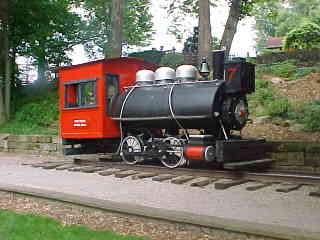
Chris Parker and I arrived here later than we wanted and I had less than twenty minutes to tour this fantastic museum of Mooney's work. If I came all this way to Ohio I was not going to miss seeing it, so sit back and enjoy a brief tour of this unique American museum. We pulled up and parked with the first thing you noticed was this steam engine Greer Steel Company 0-4-0T 1917 displayed outside.
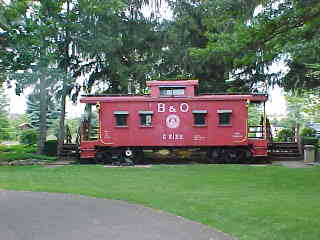
Also here was a B&O Caboose.
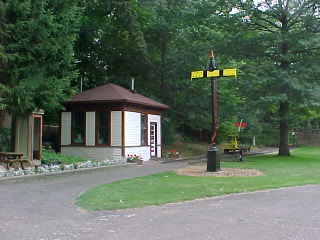
There is a small station.
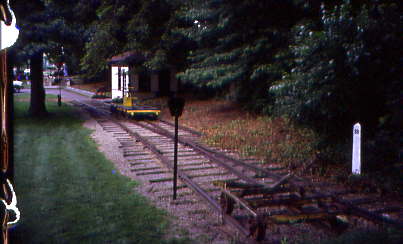
On the track are a handcar and small flat car. We walked up the stairs to the lobby of the museum. I gave the lady behind the counter one of my business cards and told her I was here to write a story. She said there would be no more tours and that I had only twenty minutes left until closing. I told her I could be quick and she let me in. I started looking, wishing I had more time but, like that old saying "You only live once, so make the most of it". I would be very quick this afternoon.
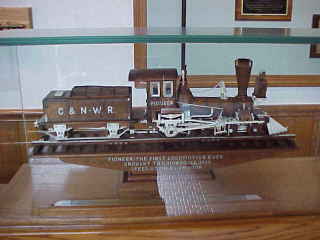
C&NWR Locomotive.

The first carving I saw was Big Four {CC&StL}, a 4-4-0 Atlantic-type locomotive built for the St Louis World's Fair which attained speeds of 100 miles an hour.
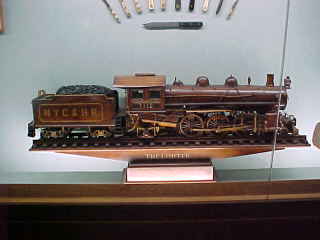
NYC&HR Locomotive.
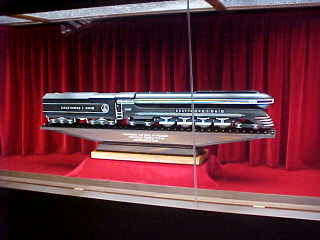
B&O Streamlined Locomotive.
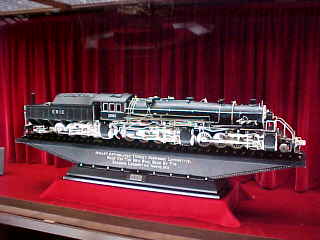
An Erie 2-8-8-2 Locomotive.
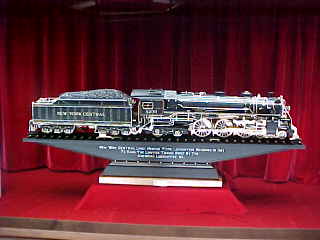
New York Central Hudson Locomotive.
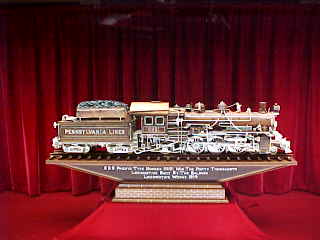
Pennsylvania Railroad K39 8661, which was the 40,000th locomotive built by Baldwin Locomotive Works in 1914.
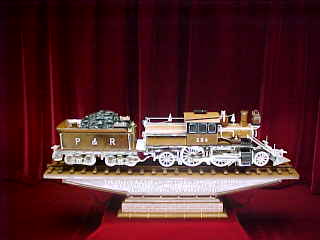
P&R Camelback Locomotive.
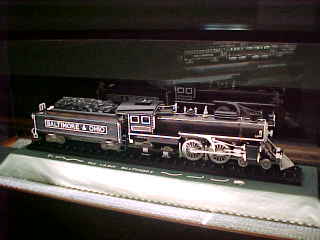
B&O Locomotive.
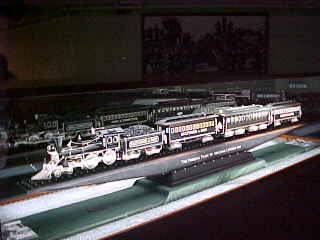
Abraham Lincoln's Funeral Train. Now some of the other locomotives in display cases.
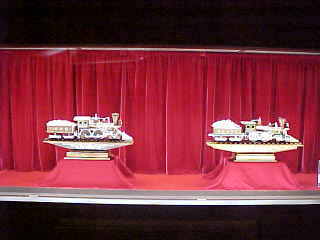
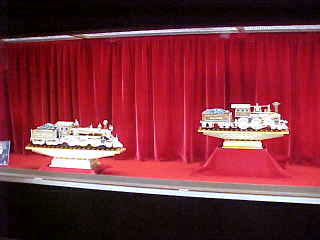
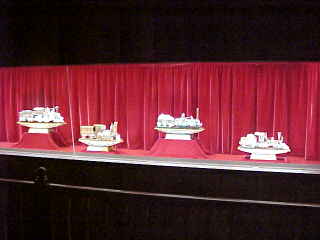
There are many other carvings at this fantastic museum that everyone should see.
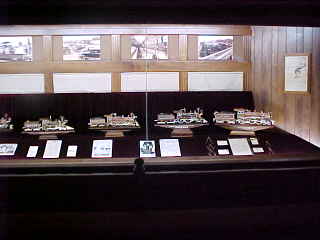
I visited the gift shop, found Chris, and then walked back to thank my wonderful hostess for such an incredible experience.
Dover, Ohio 7/21/2006We walked back to the car when I spotted a boxcar further down and told Chris I was going to investigate.
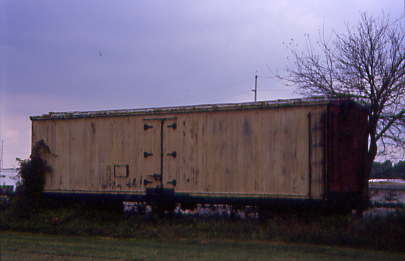
A wooden boxcar was next to the RJ Corman Line. I looked down the track and spotted a locomotive. I told Chris and we decided to go and find it. We drove through Dover and I selected the correct road that took us straight to the tracks and the engine we were looking for.
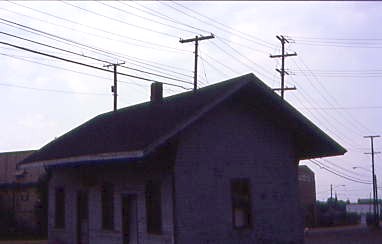
Chris parked in front of the Dover station building
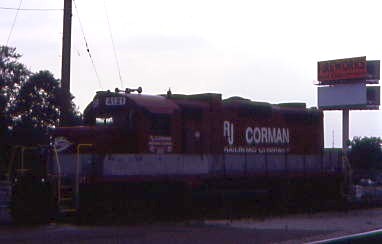
There was RJ Corman GP20 4121. I spotted some additional locomotives sitting down the track. I went into the office to ask permission, which was given, to walk along the tracks to photograph the engines. Chris and I walked along the tracks to the two very dead locomotives.
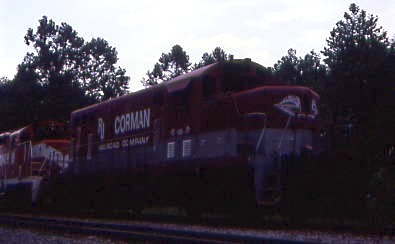
RJ Corman GP16 1805.
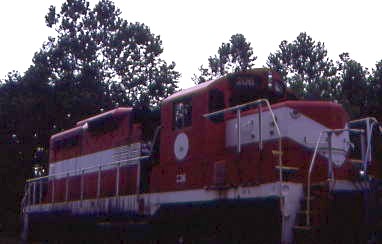
RJ Corman GP9 206. With that done, I went back into the office and thanked them for letting us do that. We drove back to the Knights Inn to get ready for the NRHS Banquet.
NRHS 2006 Banquet 7/21/2006Chris Parker and I drove over to the McDonald/Marlite Conference Center for the event. I had signed us up at Table 4. We were joined at this table by Dan and Christine Winters, G. Patrick Molloy, Joe Smith, Ed Schmitt, Bob Brewster and Jim Replogle.
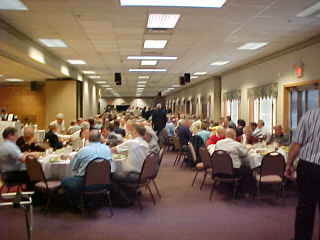
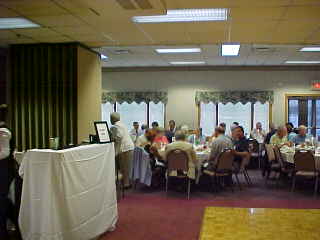
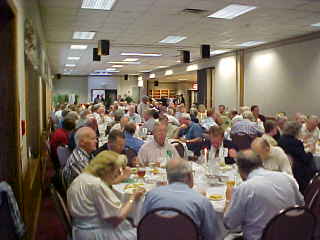
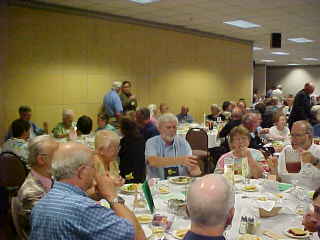
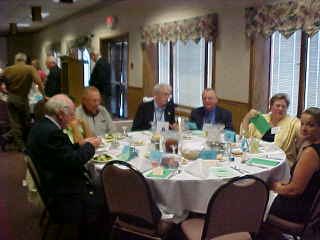
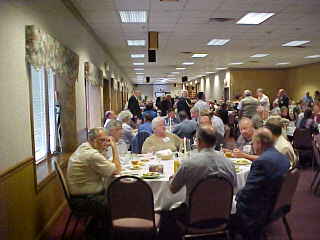
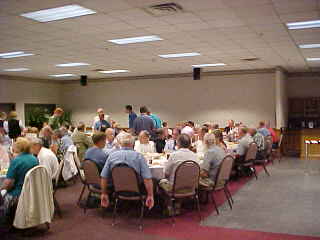
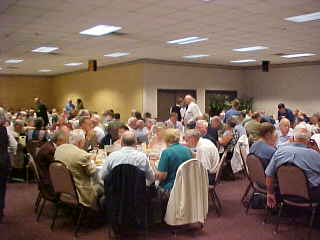
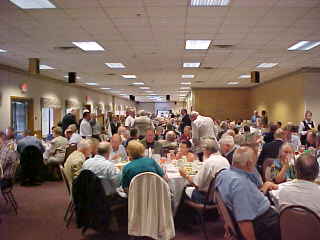
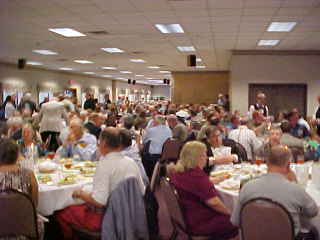
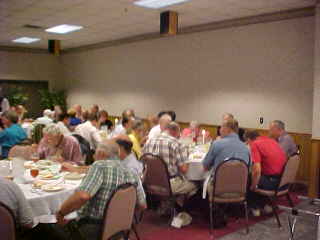
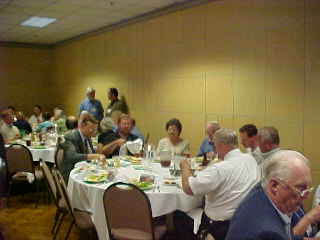
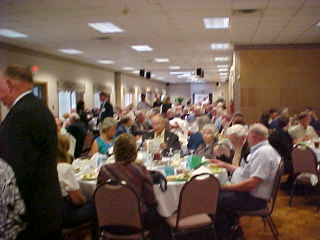
This was not the perfect hall for a banquet but we made do. Salads and rolls were the first call of the evening.
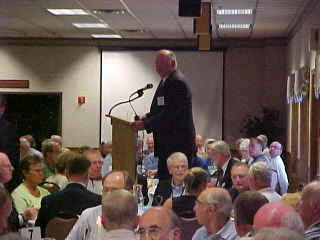
Carl Jensen welcomed everyone.
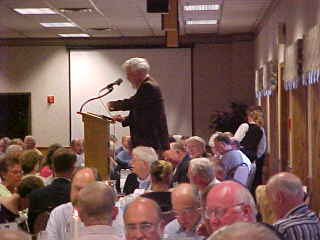
The Invocation was given by Rev. Howard Walker. For dinner, I had a decent Prime Rib and red skin potatoes. After dinner the program started.
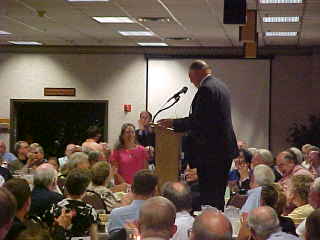
Carl Jensen spoke saying this was a true national convention run by the National Committee. How did this convention happen? By three things: people who had run conventions before, by on-site volunteers and with Orrville Depot car hosts. Before the convention the following places had been visited: Ohio Central Railfair in Dennison, Orrville Depot who had a working relationship with the Wheeling and Lake Erie Railroad, with Jerry Jacobsen who, without the Ohio Central Railroad, there could not have been a convention here, the Cuyahoga Valley Scenic Railroad and the visitor center in Tuscoming County. We had 452 members registered for the convention, but had about 700 here at the convention. He then gave examples of humorous frequently asked questions which gave everyone a good laugh. Classic Trains and Trains Magazines donated the car attendants' red vests which can be used for future conventions.
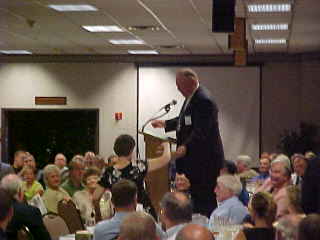
They then did the raffle which had the following prizes: 2 books, one complete Ohio Central plate setting and one Trains Unlimited Tours Camas Prairie Railroad trip in September.
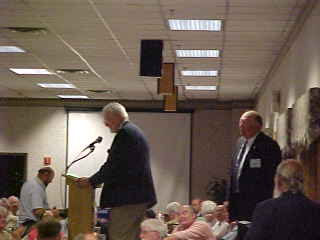
Greg P. Molloy, President of the NRHS congratulated Carl Jensen on the job he did at this year's convention, then thanked all of the national members. Carl Jensen then introduced our speaker for the evening, John B. Corns, of the Ohio Central Railroad System.
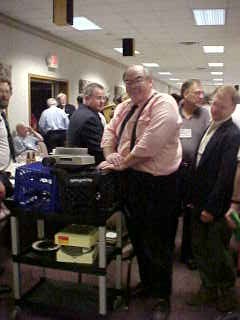
John gave a slide show of photographs he took when he was with the Chessie System and later at CSX. It was an interesting insight and look into the CSX. Once the banquet was over, Chris and I returned to the Knights Inn for a good night's rest before our last convention trip, which would be the Morgan Run Shop Tour and the Buckeye Circle trip.